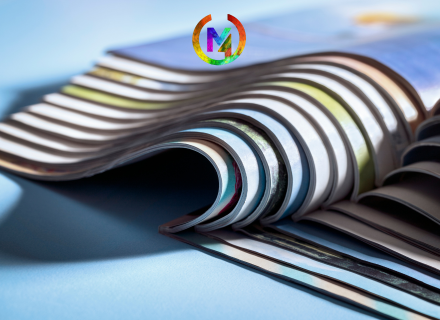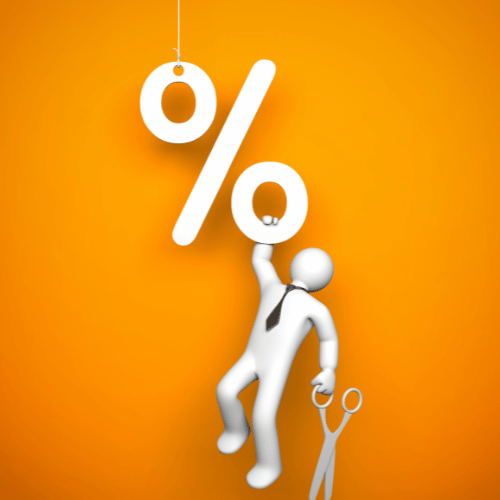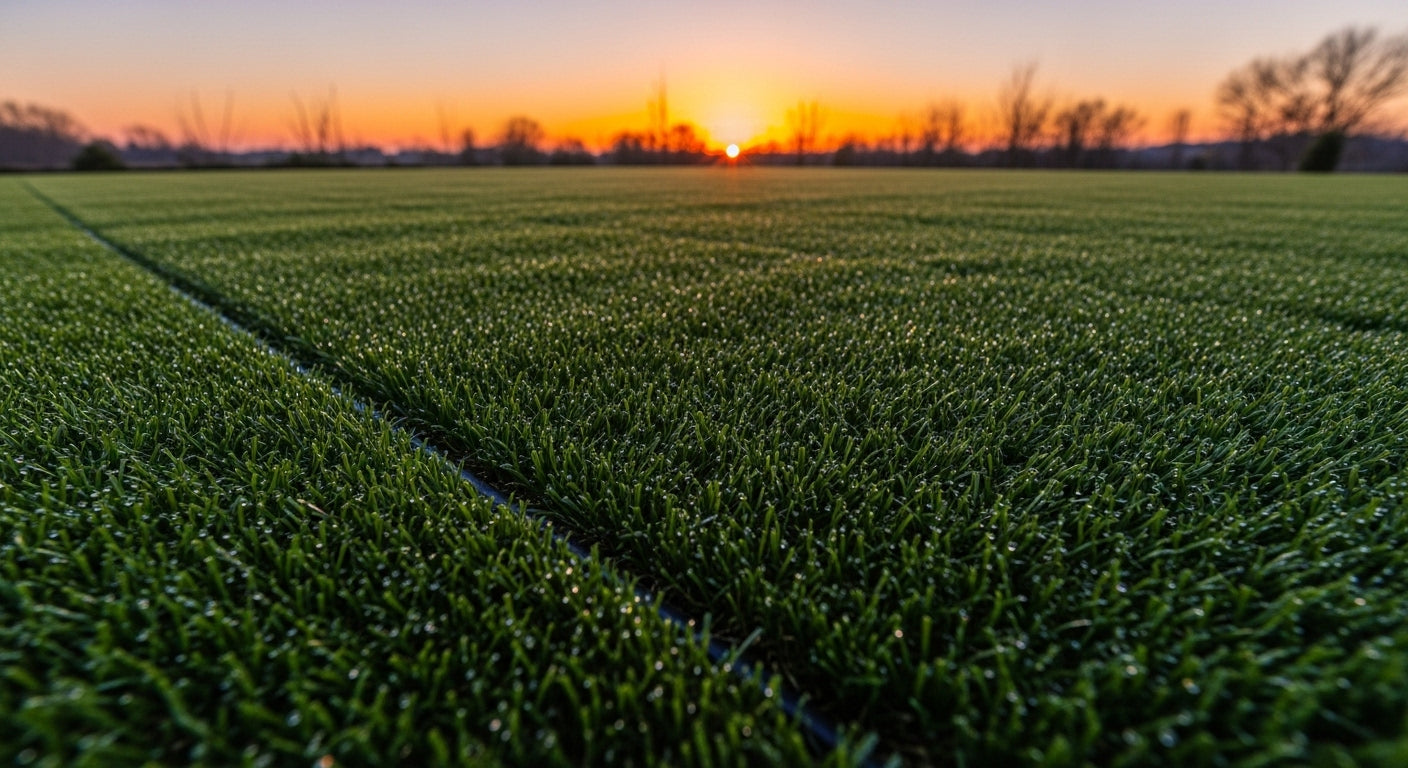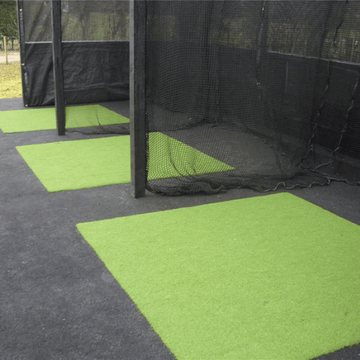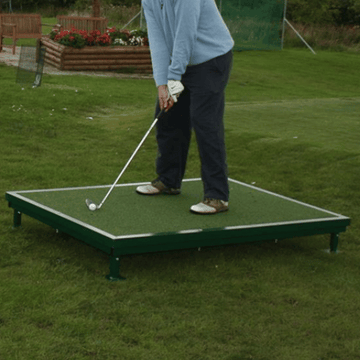Premium Artificial Grass for Golf Tees & Heavy Use: Durable, Realistic, Low-Maintenance Solutions
Premium artificial grass for golf tees and heavy-use areas solves the challenge of constant divots, patchy surfaces, and high upkeep. By combining high-density synthetic fibers with robust backing, this turf delivers a lifelike swing experience, durable performance under constant foot and club traffic, and major savings on water, mowing, and repairs. In this guide, you’ll discover why advanced tee-line turf outperforms natural grass, which product types suit driving ranges or home installations, the material features that define high-performance golf surfaces, professional installation and maintenance best practices, and how to choose the right solution for your practice needs.
Why Choose Premium Artificial Grass for Golf Tees and Heavy Use?
What Makes Artificial Golf Tee Line Turf Durable for Heavy Use?
Artificial golf tee line turf resists wear by using high-face-weight fibers and multi-ply backing that maintain pile integrity under thousands of swings.
Key durability features include:
- Exceptional fiber density of 48 oz/yd² for wear resistance
- UV-stabilized backing to prevent degradation
- Reinforced monofilament yarns that recover quickly after impact
These attributes combine to deliver a resilient hitting surface that withstands continuous use and prepares the foundation for realistic playability.
Durability of Artificial Golf Tee Lines
Artificial golf tee lines are designed to withstand heavy use and extreme weather conditions, ensuring a consistent golfing surface throughout the year. They are made with durable materials like nylon or polypropylene, which can last between 5 to 10 years with proper maintenance.
This source highlights the durability of artificial turf, which is a key factor in its suitability for golf tee applications.
How Does Premium Turf Provide a Realistic Golf Experience?
Premium golf turf mimics natural grass by matching blade stiffness, pile height, and infill resilience to simulate ball roll and divot response.
- Blade stiffness calibrated to replicate the fairway’s give
- Low-pile height for authentic club interaction
- Specialized infill blends for true ball launch and spin
By tuning each element, this synthetic surface creates a seamless transition between real grass practice and on-course conditions.
What Are the Maintenance Benefits and Cost Savings of Synthetic Golf Turf?
Synthetic golf turf reduces upkeep by eliminating mowing, irrigation, and fertiliser, leading to substantial long-term savings.
With these savings in lawn care and water usage, facility managers and homeowners recover their initial investment within a few years.
Cost Savings with Synthetic Golf Turf
Synthetic golf turf significantly reduces maintenance costs by eliminating the need for mowing, irrigation, and fertilizers. This can lead to substantial long-term savings for facility managers and homeowners, with the initial investment often recovered within a few years.
This citation supports the claim that artificial turf offers significant cost savings compared to natural grass due to reduced maintenance requirements.
How Does Artificial Turf Ensure Consistent Playability in All Weather?
Artificial turf maintains a uniform, firm surface year-round through engineered drainage channels and UV-resistant fibers.
- Perforated backing that disperses rainwater within seconds
- UV inhibitors in yarns to prevent fading and brittleness
- Non-compacting infill that retains cushion and ball response
These design elements guarantee predictable play whether in scorching sun, freezing frost or heavy rain.
What Types of Premium Artificial Grass Are Available for Golf Tees and Heavy Use?
What Are the Features of Artificial Golf Tee Line Turf?
Artificial golf tee line turf offers a seamless, continuous hitting area suited for commercial driving ranges and backyard tee boxes. It features high-density polypropylene or nylon blades, an anti-skid latex backing, and optional rubber shock-pads for joint protection. This turf integrates easily with modular tee markers and replicates tournament-grade tee boxes.
How Do Durable Synthetic Golf Hitting Mats Enhance Practice?
Durable synthetic hitting mats deliver a portable, replaceable hitting surface that holds real tees and survives heavy club impact.
- Replaceable tee inserts for extended lifespan
- EVA shock-absorption layer to protect links players’ joints
- Compatible with launch monitors and indoor simulators
These mats bridge the gap between convenience and authentic practice conditions.
What Are the Benefits of Commercial Artificial Grass for Driving Ranges?
Commercial driving range turf scales from small tee stations to multi-acre installations, reducing water use by up to 70 percent and cutting annual maintenance costs by 60 percent.
Large-format rolls simplify installation and provide a consistent surface across dozens of hitting lanes, while eco-friendly infill options support sustainable facility management.
What Key Features Define High-Performance Golf Turf?
How Do Nylon and Polypropylene Materials Compare for Golf Turf?
Nylon and polypropylene differ in resilience, cost, and UV stability, shaping their suitability for tee-line applications.
| Synthetic Fibre | Fibre Density | Durability Rating | Typical Use |
|---|---|---|---|
| Nylon | 3,000 D, high tenacity | Excellent | High-traffic commercial |
| Polypropylene | 2,200 D, medium tenacity | Good | Residential and practice |
Nylon vs. Polypropylene for Golf Greens
Nylon putting greens offer superior ball roll and performance compared to polypropylene greens. Nylon greens provide a more realistic golf experience, with consistent ball speed and true roll, which is crucial for golfers seeking to improve their game.
This source provides a comparison of nylon and polypropylene, highlighting the benefits of nylon for golf applications.
How Does Shock Absorption in Synthetic Turf Prevent Golfer Injuries?
Shock absorption layers cushion impact by dispersing force through closed-cell foam or rubber infill, reducing joint strain by up to 30 percent.
This protection supports longer practice sessions without fatigue and minimises the risk of overuse injuries to ankles and knees.
Can You Use Real Golf Tees in Premium Artificial Grass?
Premium artificial grass securely holds real wooden or plastic tees by combining dense fiber clusters with a semi-rigid backing that grips the tee shaft.
Golfers benefit from natural tee height adjustment and realistic feedback on each swing, just as they would on natural grass.
How Does UV Stability Protect Artificial Golf Turf from Weather Damage?
UV-stabilized pigments and additives prevent fibre degradation and colour fade by blocking harmful ultraviolet rays.
Turf retains its original hue and tensile strength for over a decade, ensuring reliable performance and appearance even under intense sunlight.
UV Resistance in Artificial Grass
UV-resistant artificial grass maintains its vibrant green color and structural integrity by preventing fiber degradation and color fading caused by prolonged sun exposure. This ensures the turf's longevity and appearance, even under intense sunlight.
This research emphasizes the importance of UV resistance in artificial grass to maintain its appearance and durability over time.
How Is Premium Artificial Grass Installed and Maintained for Longevity?
What Are the Professional Installation Steps for Golf Tee Turf?
- Excavation and removal of topsoil to establish a stable sub-base
- Installation of a crushed stone layer with compacted grading for drainage
- Unrolling and splicing turf panels using weather-resistant adhesive
- Securing edges with galvanized staples and infilling with graded silica sand
- Grooming fibers and inspecting surface for uniform pile direction
This method ensures a level, long-lasting foundation ready for peak performance.
How Can You Maximize the Lifespan and ROI of Synthetic Golf Turf?
Maximising turf longevity involves regular brushing to maintain blade uprightness, occasional infill top-ups, and periodic debris removal.
Warranties typically cover UV-fade and wear for 8–15 years, while proper upkeep can extend usable life beyond two decades and enhance return on investment.
How to Choose the Right Artificial Grass for Your Golf Practice Needs?
What Are the Differences Between Commercial and Residential Turf Applications?
Commercial turf applications demand heavier face weight, industrial-grade backing and rapid-drain systems to handle hundreds of golfers daily.
Residential installations prioritise lower pile height, aesthetic blend-in with landscaping, and ease of DIY installation for occasional practice in backyards and garages.
Which Factors Should Influence Your Artificial Golf Turf Selection?
- Budget determines material quality and installation complexity
- Climate impacts UV resistance and infill choice
- Traffic volume dictates face weight and fibre resilience
- Performance requirements shape pile height, backing type and shock layer
Balancing these parameters ensures the chosen surface aligns with your practice goals and maintenance expectations.
Premium artificial grass transforms golf practice with durable, realistic surfaces that slash maintenance and deliver consistent performance in any weather. Explore custom options to match your facility’s demands or backyard ambitions and elevate every swing with confidence.
Want to know more?

